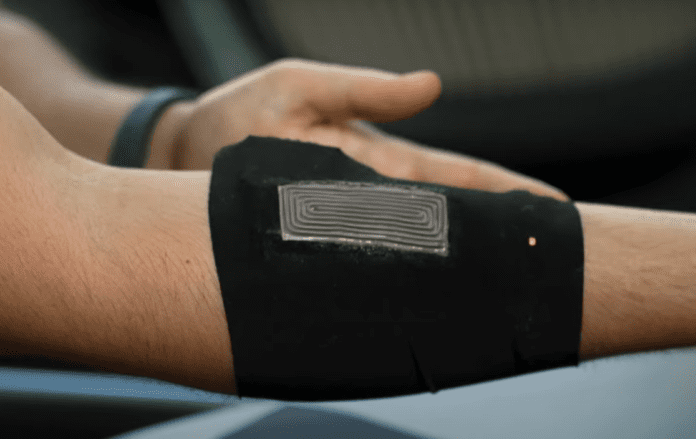This post is also available in:
 עברית (Hebrew)
עברית (Hebrew)
Researchers at the University of Washington have unveiled a groundbreaking wearable device capable of converting body heat into electricity. This innovative prototype not only addresses the common challenge of battery life in wearable technology but also demonstrates remarkable durability. The device has remained functional despite being punctured and stretched 2,000 times, showcasing its robustness and flexibility.
The device operates by harnessing the heat generated by the human body to power small electronic devices, such as sensors, LEDs, or batteries. “When you place this device on your skin, it uses your body heat to directly power an LED. As soon as you put the device on, the LED lights up. This kind of immediate power generation wasn’t possible before,” explained Mohammad Malakooti, senior author and UW assistant professor of mechanical engineering.
This pioneering technology is designed with three distinct layers, according to Interesting Engineering. The core consists of rigid thermoelectric semiconductors that convert heat into electricity. Surrounding these semiconductors are 3D-printed composites that enhance energy conversion while minimizing weight. The outer layer features printed liquid metal traces, which provide essential stretchability, conductivity, and electrical self-healing properties. The liquid metal also improves heat transfer to the semiconductors, thereby boosting overall energy conversion efficiency.
The team began the project with extensive simulations to identify the optimal materials and design for the device. This meticulous approach enabled them to create a flexible and comfortable device that molds to the shape of the wearer’s arm, distinguishing it from traditional, rigid heat-to-electricity converters.
Beyond wearables, this technology holds potential for applications in electronics that generate excess heat. “Imagine applying these devices to warm electronics and using that excess heat to power small sensors,” Malakooti suggested. This could be particularly useful in data centers, where servers generate significant heat and require additional energy for cooling. By repurposing excess heat, these devices could power temperature and humidity sensors, thus creating a more sustainable system with reduced energy consumption and maintenance needs.
Additionally, Malakooti envisions future applications where this technology could enhance virtual reality systems and other wearable accessories by creating hot and cold sensations on the skin, thus improving user comfort.
The research team is currently focused on perfecting this technology to ensure its efficiency and durability. With promising prospects ahead, this device represents a significant step forward in wearable technology and sustainable energy solutions.
The findings were published in the journal Advanced Materials.


























